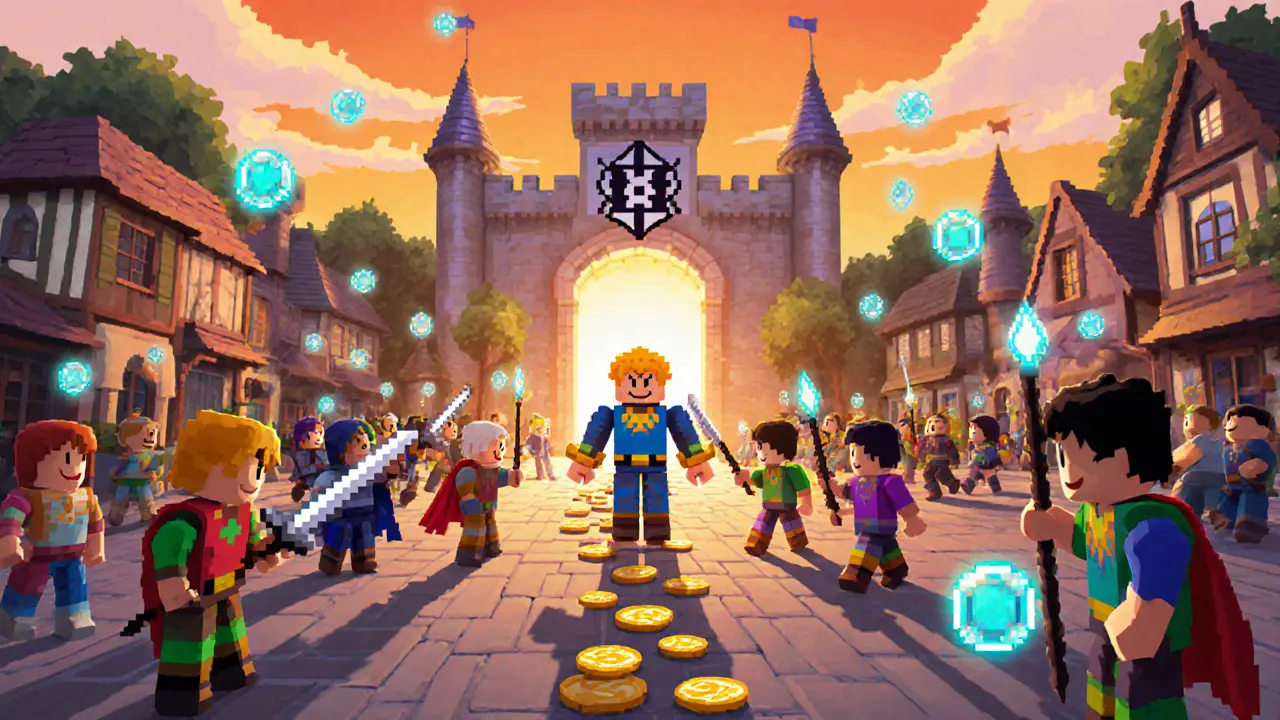
DeFi Kingdoms Yield Farming Calculator
Calculates estimated JEWEL rewards and USD value based on:
- Investment amount
- Selected APR (70-90% average, up to 250%)
- Current JEWEL price
Enter values to see estimated returns
* Results show estimated returns after fees. Actual returns may vary due to market volatility.When you hear "DeFi Kingdoms," the first image that pops up is usually a pixel‑art fantasy world where heroes battle, quests unlock, and crypto rewards rain down. But beneath the cute graphics lies a fully functional decentralized exchange (DEX) that runs on the Harmony blockchain. This review breaks down how the exchange works, why the gaming layer matters, and whether the promised yields are worth the risk.
What is DeFi Kingdoms?
DeFi Kingdoms is a hybrid platform that blends a DEX with play‑to‑earn (P2E) RPG mechanics. Launched in 2021 on Harmony, the platform uses the native JEWEL token both as a utility coin for trading and as the currency for in‑game actions, such as buying heroes, completing quests, and staking liquidity.
How the DEX Engine Works
The exchange side runs on the UniswapV2 protocol, meaning it follows the classic automated market maker (AMM) model. Liquidity providers (LPs) deposit paired assets-say ONE and JEWEL-into a pool and receive LP tokens that represent their share. Traders then swap tokens against that pool, with prices shifting according to the pool’s token ratio. Every swap incurs a small fee (usually 0.3%), which is automatically routed back to LPs.
- Liquidity pools are called "Gardens" and are the main yield‑farm spots.
- Swap fees are distributed proportionally to LP token holders.
- Staking LP tokens in a Garden earns additional JEWEL rewards on top of fee income.
Gaming Mechanics that Set It Apart
Unlike a bare‑bones DEX, DeFi Kingdoms adds a layer of RPG stats that affect how you earn. Each hero NFT comes with seven attributes-Strength (STR), Dexterity (DEX), Agility (AGI), Vitality (VIT), Endurance (END), Intelligence (INT) and Wisdom (WIS). These stats control everything from mining efficiency to critical‑hit chances in combat. The more you level up a hero, the higher the yield you can pull from certain Gardens because the game rewards stronger heroes with bonus JEWEL.
Quests also play a role. Completing a quest can unlock a temporary boost to APR or grant a rare resource that can be sold on the marketplace for additional JEWEL. This gamified feedback loop keeps users engaged far longer than a simple swap interface would.
Yield Farming & APR Realities
Garden APRs have historically spiked as high as 250%, with daily compounding theoretically pushing annualized returns past 1,100% for aggressive users. In practice, the average APR across the top three Gardens sits around 70-90% after fees. The platform’s “Bank” feature offers a flat 24.59% APR on simple JEWEL deposits-a solid rate compared to traditional banks (under 0.5%).
High yields come with two trade‑offs:
- Impermanent loss: Providing liquidity in volatile pairs can erode your capital if token prices diverge sharply.
- Token volatility: JEWEL’s price has fluctuated between $0.03 and $0.06 since 2023, meaning high APRs may not translate to higher USD returns.
Tokenomics of JEWEL
JEWEL is both the platform’s governance token and the primary in‑game currency. Holders can vote on protocol upgrades, fee structures, and new hero releases. Supply is capped at 1billion JEWEL, but a portion is continuously minted as farming rewards, creating mild inflation.
Price forecasts for 2025 suggest a floor around $0.034, with upside potential if GameFi adoption spikes. Long‑term projections (2030) place JEWEL in the $0.045‑$0.053 range, assuming steady growth in active users and cross‑chain bridges.
Pros and Cons
| Pros | Cons |
|---|---|
| High yield farming APRs (up to 250% on Gardens) | Complex UI-trading and gaming mechanics overlap |
| Unique RPG layer that incentivizes daily engagement | Limited token pairs compared to major DEXs like Uniswap |
| Cross‑chain DFK Chain expands bridge options | JEWEL price volatility can erode fiat returns |
| Governance rights for JEWEL holders | Regulatory gray area for gaming tokens |
How It Stacks Up Against Competitors
Compared to pure DEXes (Uniswap, SushiSwap), DeFi Kingdoms offers fewer trading pairs but compensates with its GameFi ecosystem. Against dedicated GameFi platforms like Axie Infinity or Splinterlands, DFK provides a more robust DeFi backbone-real swap functionality, staking, and liquidity mining-while still delivering hero NFTs and quests.
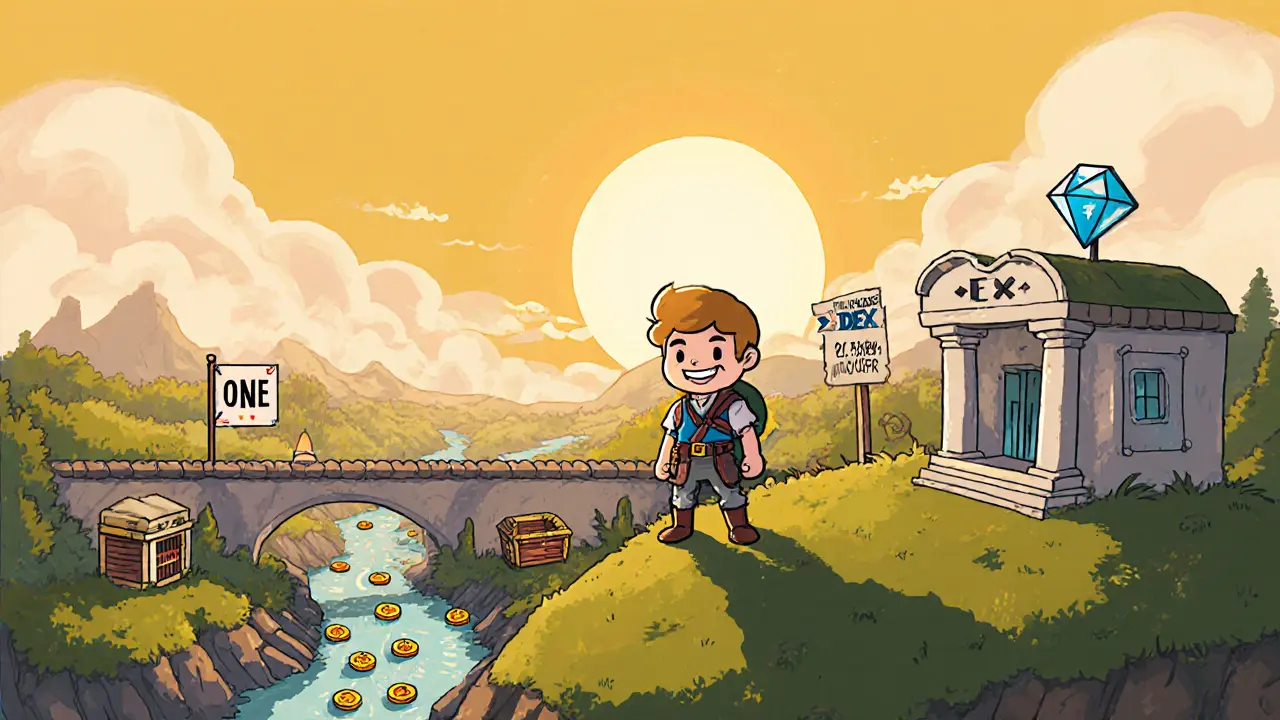
Getting Started: Step‑by‑Step
- Set up a Web3 wallet (MetaMask is the most common). Add the Harmony network using RPC https://api.harmony.one.
- Buy a small amount of ONE for gas fees on any exchange that lists it (Binance, KuCoin).
- Bridge ONE to the DFK Chain if you want cross‑chain assets. The bridge UI lives on the platform’s dashboard.
- Swap ONE for JEWEL or any other token you’d like to provide as liquidity.
- Navigate to the "Gardens" tab, pick a pool (e.g., JEWEL/ONE), and add liquidity. Confirm the transaction in MetaMask.
- Optionally, claim the LP token and stake it in the same Garden to earn extra JEWEL rewards.
- Buy a hero NFT from the marketplace if you want to dive into the RPG side. Each hero costs between 10‑100 JEWEL depending on rarity.
- Start quests, level up your hero, and watch the APR boost as your stats improve.
Risks to Keep in Mind
DeFi Kingdoms inherits all the typical risks of DeFi-smart‑contract bugs, bridge exploits, and liquidity crunches. Add to that the volatility of gaming economies: if player numbers drop, in‑game token demand falls, pulling down JEWEL’s price. Finally, regulatory scrutiny over GameFi could lead to stricter KYC/AML requirements, potentially limiting anonymity.
Final Verdict
If you’re a crypto trader who loves high‑yield farms and enjoys a bit of pixel‑art RPG, DeFi Kingdoms can feel like a playground that actually pays. The DEX part works fine, but it’s not built for professional arbitrage or massive volume swaps. Expect a learning curve-understanding both AMM math and hero stats is essential. For users seeking pure trading efficiency, a traditional DEX might be a better fit. For anyone eager to blend finance with gaming, the platform’s APRs, governance token, and evolving cross‑chain roadmap make it a compelling niche option.
Frequently Asked Questions
Do I need ONE tokens to use DeFi Kingdoms?
Yes. ONE is the gas token on Harmony, so you’ll need a small amount for every transaction, including swaps and bridge moves.
How safe is the Yield Farming on Gardens?
The farms are audited, but they still expose you to smart‑contract risk and impermanent loss. Start with a modest amount and monitor the pool’s performance.
Can I withdraw my JEWEL to a centralized exchange?
Yes. After bridging back to Harmony, you can send JEWEL to Binance, KuCoin, or any exchange that lists the token.
What’s the biggest advantage of DeFi Kingdoms over Uniswap?
The GameFi layer-heroes, quests, and high‑APR Gardens-adds a gamified reason to stay and earn, which you won’t find on a plain DEX.
Is DeFi Kingdoms regulated?
It operates as a decentralized protocol, so it isn’t directly regulated, but local authorities could target the gaming token aspect in the future.
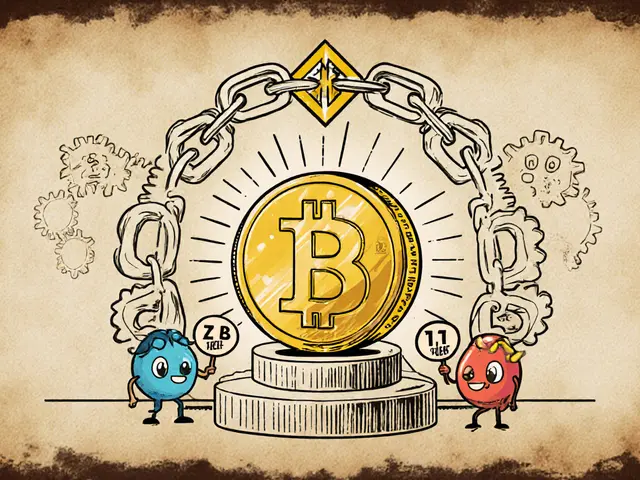
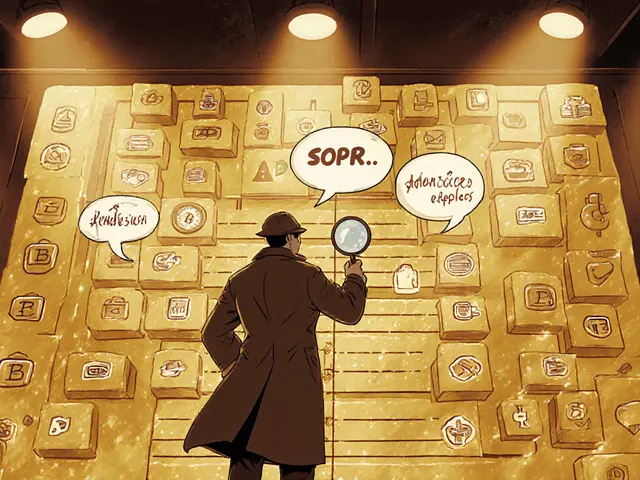
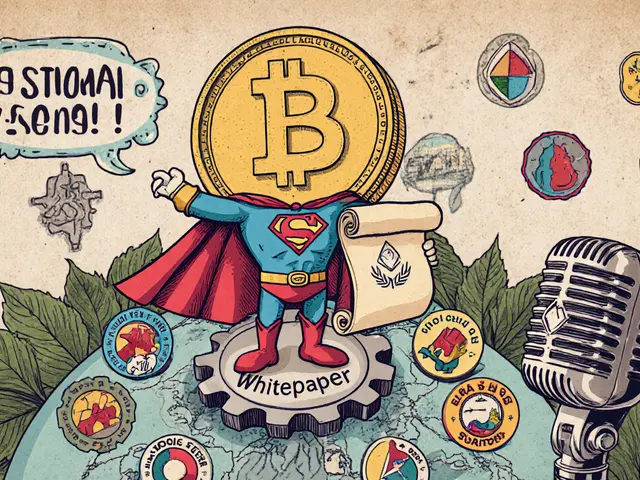

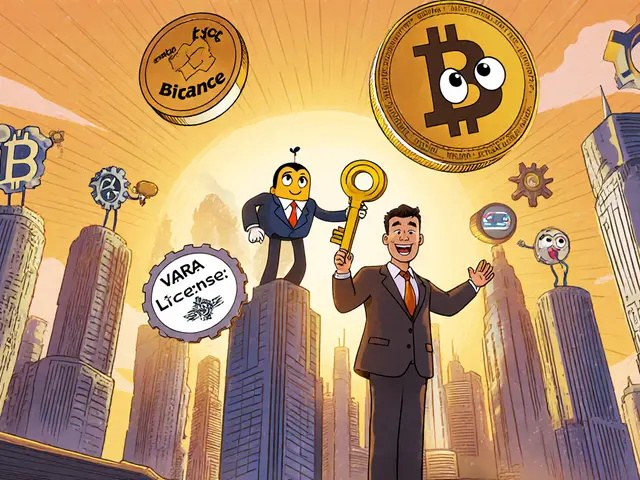
Comments (21)
Cecilia Cecilia
DeFi Kingdoms blends a DEX with RPG elements creating a unique hybrid
lida norman
Wow, the way the game ties token economics to hero stats feels like watching a fairy tale unfold 🌟 I can almost hear the pixel swords clashing while my portfolio sneaks a little extra JEWEL in the background 😅
Bobby Lind
What a fascinating mix of finance and fun, folks! The Gardens really do sparkle, the heroes add flavor, and the APRs can knock your socks off!!!
Katharine Sipio
I appreciate the comprehensive breakdown; newcomers should feel encouraged to explore both liquidity provision and hero development within the platform.
Shikhar Shukla
While the summary is adequate, it neglects to address the inherent risks of smart‑contract vulnerabilities which remain a pivotal concern for any participant.
Deepak Kumar
Jumping in is straightforward-first, fund your wallet with ONE for gas, then bridge to the DFK Chain, swap for JEWEL, and finally stake in a Garden; this pipeline lets you start earning in under ten minutes!
Carolyn Pritchett
The so‑called “high APR” is just a marketing gimmick; once you factor in impermanent loss, the net return is barely worth the hassle.
Jason Zila
Understanding the AMM curve is essential; without grasping how token ratios influence price slippage, you’ll overpay on swaps and erode profits.
Miguel Terán
DeFi Kingdoms offers a novel approach to decentralized finance by embedding game mechanics directly into its liquidity pools. Users deposit liquidity and simultaneously empower their heroes, creating a feedback loop between earnings and character progression. The Gardens function as conventional yield farms but reward participants with extra JEWEL tied to hero stats. Because the underlying AMM follows the UniswapV2 formula, price impact behaves predictably as pool balances shift. However, the addition of quest bonuses introduces a variable component that can temporarily boost APRs beyond baseline levels. Players often report that completing daily quests feels rewarding beyond the monetary incentive, adding a sense of achievement. From a risk standpoint, the platform inherits standard DeFi threats such as smart‑contract bugs and bridge exploits. Moreover, JEWEL’s price volatility means that nominal APRs may not translate into stable fiat returns. Liquidity providers should therefore monitor both token price movements and pool composition regularly. The governance token also grants voting rights, allowing holders to influence fee structures and future game updates. Cross‑chain expansion via the DFK Chain broadens asset accessibility but adds another layer of complexity. In practice, seasoned traders may find the UI cluttered, as the interface attempts to display both trading data and RPG stats simultaneously. Nevertheless, the community around DeFi Kingdoms remains active, sharing strategies for optimal hero builds and pool allocations. If you enjoy blending financial speculation with role‑playing elements, the platform can serve as an engaging sandbox. Ultimately, success depends on balancing yield expectations with the inherent uncertainties of both markets and gaming ecosystems.
Shivani Chauhan
The integration of token swaps with hero progression is intriguing, yet it raises questions about user onboarding; clear tutorials could smooth the learning curve for newcomers.
Devi Jaga
Oh great another GameFi protocol promising moonshots while inflating token supply-classic DeFi hype cycle.
Hailey M.
Seriously, the pixel art vibe is adorable 😍 and the APR spikes feel like fireworks 🎆 but remember the market can be brutal, so keep your expectations in check 😬
Schuyler Whetstone
People need to stop glorifying this junk, it's just another fad that will crash, and most of you are too blind to see it coming.
Chris Morano
Exploring the Gardens can be rewarding if you start small and let your heroes grow organically.
Ikenna Okonkwo
In the grand tapestry of decentralized finance, platforms like this remind us that utility and entertainment can coexist, prompting us to rethink traditional boundaries.
Jessica Cadis
From a global perspective, this fusion of finance and gaming reflects a shift towards more immersive digital economies.
Matthew Theuma
Balancing yield and gameplay feels like walking a tightrope, but tha community’s support makes it less scary 😊
David Moss
Some say the platform’s tokenomics are designed to funnel wealth to insiders, and the lack of transparent audits only fuels that suspicion.
Pierce O'Donnell
Yield numbers are inflated.
Vinoth Raja
Yo, the APRs look sick but you gotta watch the impermanent loss, it’s a straight up kill switch for your LP.
Kaitlyn Zimmerman
If you’re new, start by bridging ONE, swapping for a modest amount of JEWEL, and staking in a low‑volatility Garden before buying any hero NFTs.